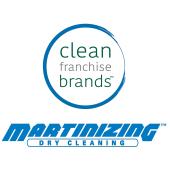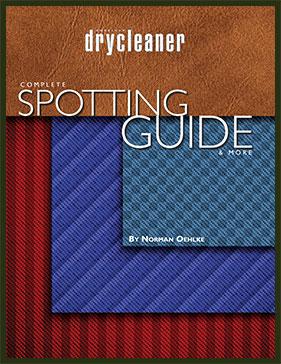Getting on the Same Page with Employee Handbooks (Part 2)

NASHVILLE, Tenn. — Clear communication with employees from the first day of their time at a drycleaning company is needed to make sure all questions are answered and all expectations of both the employee and the employer are spelled out.
This was the message of Beth Milito, executive director of the National Federation of Independent Business (NFIB), during a recent webinar on the topic.
In Part 1 of this series, we explored the broad topics that employee handbooks should addressed, and today, we’ll begin our examination of essential policies that should be included in such a document.
No matter the size of the company, Milito suggests making sure that the handbook addresses 10 key areas that set expectations of what’s required of both the staff and the company.
So, what should go into a dry cleaner's employee handbook? Milito suggests looking at 10 topics when first creating such a document to set expectations of what’s required of both the staff and the company.
1. Introduction — “The introduction is a welcome statement to new and existing employees,” Milito says. “It’s telling employees why it is you are issuing this handbook and offers some general information about the business.”
Milito suggests including the following in this section:
- History of the Company — How the company got started and how it has grown. The company’s founder(s) and current executives can be introduced here.
- Values — Provide the company’s core values, and explain what each value means to the company and why it has been chosen as a core value.
- Mission statement — Help employees understand the company’s purpose by providing and explaining its mission.
2. At-Will Statement — “You want to follow the introduction with the employment at-will statement,” Milito says. “In all states except Montana, employment is at will. That means that in the absence of a written employment contract or a collective bargaining agreement — in other words, union business — either the employer or the employee may terminate employment for any reason that is not contrary to law.”
Cases where it would not be legal, Milito says, are terminating someone because they are over 50, pregnant or in some other protected category. Montana’s “good cause” standard means that the employer must demonstrate a good cause for firing the employee.
“The other category that you may want to define at the start of the handbook in the introduction section, or under the Wage and Hour section, is a discussion or description of whether or not employees or are exempt or non-exempt,” Milito says.
Exempt employees are not entitled to overtime pay and typically hold executive, administrative or professional positions. Non-exempt employees typically hold non-supervisory positions and are entitled to overtime pay for hours worked over 40 hours a week, or as specified by state law.
Contractors are workers who do work for the company but are not part of the payroll. Milito uses the example of an IT or website designer who comes in occasionally, noting that they are not part of the exempt/non-exempt discussion.
3. Equal Employment Opportunity Policy — The Equal Employment Opportunity Commission (EEOC) is the federal agency that oversees and enforces federal laws that make it illegal to discriminate against a job applicant or employee because of their protected status. Protected categories include race, color, religion, sex, age, disability, national origin, veteran status, citizenship, pregnancy, genetic information and all other categories protected by federal, state and local anti-discrimination laws.
“This is a very important legal policy that should be included in all employee handbooks,” Milito says. “It’s a reminder that employees in your business are protected from discrimination under all applicable federal, state and local anti-discrimination laws. You also want to set forth procedures for reporting violations for EEO infractions. It’s a good place to list the contact for the person responsible at your company for EEO policy.”
4. Policy Against Unlawful Harassment — “This, along with the at-will policy and the EEO policy, are the three must-have policies in every employee handbook,” Milito says. This section establishes the company’s policy against all forms of unlawful harassment, including sexual harassment.
This section, Milito says, should also outline the reporting procedure, along with the contact information for the individual at the business who will be taking the complaints.
“You hope that individuals are comfortable approaching his or her own manager about any issues,” she says, “but it’s always good to have an alternative person to whom employees can report harassment or unlawful workplace behavior, just in case the manager or direct supervisor is the individual who is engaging in the unlawful conduct.”
Having such a procedure or policy in place for reporting unlawful harassment, Milito says, will go a long way towards protecting the company from liability if a claim is made, and if the company addresses the harassment promptly.
5. Wage and Hour Policy — “Some states have laws that differ from the Fair Labor Standards Act (FLSA), which is the federal law that governs overtime and minimum wage and deciphers between the exempt and non-exempt employees,” Milito says. “But many states have laws that differ from the FLSA, so it’s important to remember that employers must follow both state and federal law. And if the laws conflict, the employer must follow the higher standard. In other words, the law that gives the greatest benefit to the employees. For example, if a state has a minimum wage higher than the federal $7.25 an hour, and many states do, the employer must comply with the state minimum wage.”
“The U.S. Department of Labor (dol.gov) has a very good wage and hour website and a map that very easily lets you click on it to find out what the minimum wage is in your state,” she says. “DOL also has a map where you can click on your state to determine whether or not you have meal and/or rest break laws in your state, which can be a helpful resource.”
Come back Tuesday for the conclusion of this series, when we’ll round out the top 10 essential policies that should be in employee handbooks. For Part 1 of this series, click HERE.

Ohio Martinizing Cleaners Franchise Changes Ownership

Getting on the Same Page with Employee Handbooks (Part 1)

New Owners to Bring Lapels Cleaners to Louisiana

The Makings of a Great Drycleaning CSR (Conclusion)

ABC Joins Efforts to Spearhead Circular Fashion Movement

The Makings of a Great Drycleaning CSR (Part 2)

Textile Manufacturing Veterans Open Texas Martinizing Cleaner Location

The Makings of a Great Drycleaning CSR (Part 1)

Father, Son Expand Idaho Tide Cleaners Franchise

Keeping the Tension On (Conclusion)
Podcasts for You
To Buy or to Lease: Compare the Differences

Listen as Joe Hebeka, owner of The Belding Group, talks about both sides of the equation: buying and leasing a garment care property. "It's all about the cash flow," Hebeka says, "look at every situation individually."
Succession Planning: Becoming Your Dry Cleaner's Next Leader

Monika Manter of Balfurd Dry Cleaners discusses growing into a leadership role in a family business, the decisions that need to be made along the way and, when the time comes, how to make a smooth transition for everyone involved.
What It Takes To Build A Plant Design Award Winner

From site selection to cutting the ribbon, what it takes to design a drycleaning plant, told by the grand-prize winner of American Drycleaner's 58th Annual Plant Design Awards, Tide Dry Cleaners, Sarasota, Fla.
From the Research Center
The Complete Spotting Guide & More

Attracting Customers & Increasing Profits—Drycleaning Marketing 101

How to Profit by Going Green: Simple Strategies That Are Friendly to The Earth & The Bottom Line

Latest Digital Editions
Digital EditionAmerican DrycleanerMay 2024

- Recovering From – and Avoiding – Disaster
- What Dry Cleaners Need for Where They Are
- Around the Industry

